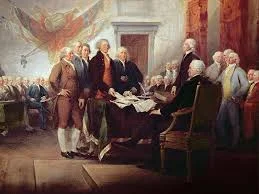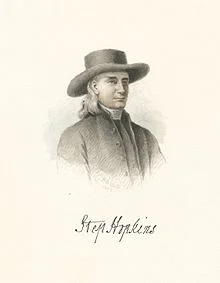William Moultrie Inspires South Carolina's State Motto...And It's State Flag
William Moultrie was a hero in the early stages of the American Revolution.
His leadership in the Battle of Fort Sullivan gave the Continental Congress a bit more courage to declare independence days later. Furthermore, it gave South Carolina both its State Motto and State Flag.
William Moultrie
As the American Revolution began, and local militias elected officers, South Carolina appointed William Moultrie as Colonel of the states 2nd Regiment.
Moultrie received this position, in large part, because of his experience in the French and Indian and Anglo-Cherokee Wars. He was further trusted due to the association he had with colonial leaders through time spent in the South Carolina Assembly.
The Battle of Fort Sullivan
William brought his soldiers to Sullivan’s Island, whose fort protected the inlet which led to Charleston. This fort was incomplete. In order to protect themselves from the cannon balls that would soon be launched from British ship, the men built barricades out of palmetto trees.
When the British Navy arrived, the palmetto trees turned into a surprisingly good defensive structure. They absorbed the impact of the balls which bounced off. This is why South Carolina is known as the Palmetto State today.
Additionally, Moultrie designed a flag which flew over Fort Sullivan during the battle. This blue flag with a crescent moon in the top left corner bares a striking resemblance to (and in fact is the basis for) the State Flag of South Carolina.
Honors
Despite his success in defending the city, Charles Lee (who showed up late to the battle and left early) was given credit by most of the public. It was Lee, instead of William Moultrie, who became popularly known as the ‘Hero of Charleston.’
Moultrie, for his part, was given credit by the Continental Congress. After receiving an official ‘thank you’ from the confederates’ capital, he was promoted to Brigadier General. Because of this, he and his men were absorbed into the Continental Army.
Also, Fort Sullivan was renamed Fort Moultrie to further honor the battle's hero. Fort Moultrie was used through the end of World War 2.
Prisoner
While Moultrie remained with the Continental Army for the duration of the war, his heroic days were behind him.
His attempt to stop the British from occupying Savannah failed. Later, he was present when the enemy returned to Charleston. This time the British took that city as well as taking Moultrie as a prisoner.
Major General and Governor
William did not remain captive long, being exchanged back to the Continentals.
After the fall of Yorktown, Moultrie became the final American promoted to the position of Major General. While this was after the majority of hostilities had ended, and mostly a ceremonial appointment, it is no less impressive.
Soon after the Revolutionary War was complete, William Moultrie was elected as Governor of the State of South Carolina. He held this position for the maximum allowed time, which was two years.
Conclusion
William Moultrie played a pivotal role early in the Revolutionary War.
His brilliant defense of Charleston, just days before the Declaration of Independence, gave the Founders in Phillie the courage to believe the war could be won. Oh, and it also gave South Carolina its State Nickname and State Flag.
His heroics and virtue led him to continuing to serve the public and sitting as Governor of the State.
Did you like this article? I sure hope so. I mean, you read the whole thing so...let me know! Leave a message in the comments and tell me what was good, what was bad, what I left out and what you'd like to see next.
Today's book recommendation is 'Crescent Moon Over Carolina' by C.L. Bragg. It is a standard biography about a really interesting Founding Father. I highly suggest you give it a read. As always, books recommended on this site are sold through Amazon and although we receive a commission Amazon does not change the price.






